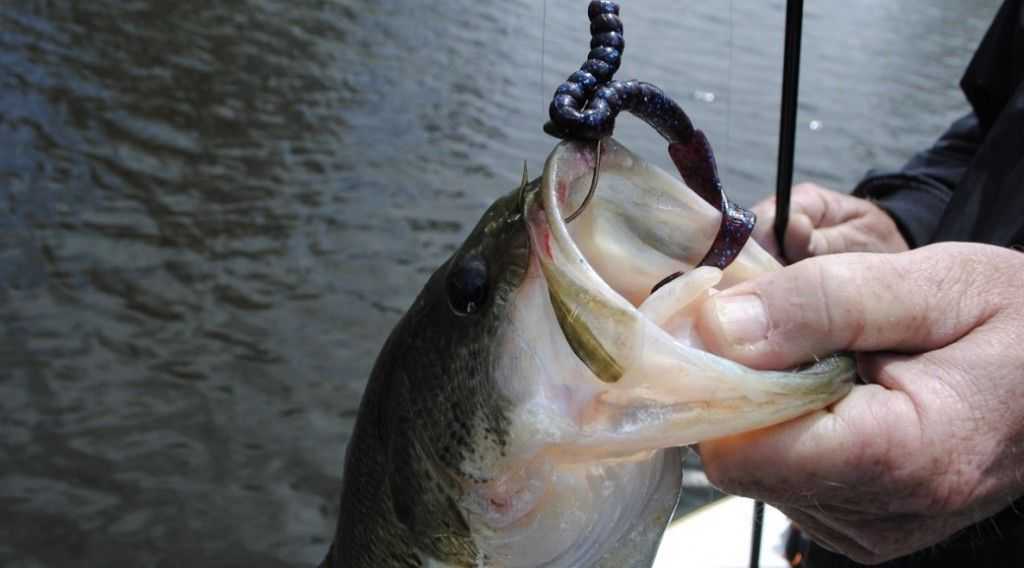The fish are deep. You want to get deep and close to the bottom, but there are rocks that can snag you and break off your lure and maybe weeds that can snag the lure hooks. Hmmm… Fortunately, this is not a problem requiring Sherlock Holmes.
The simple answer is with a floater/sinker rig consisting of a sliding sinker a few feet ahead of a simple floating lure. For lots of reasons, the best lure is a simple floating Texas-rigged worm.
The best sinker to use is a clinch-on or similar sinker that you can fasten to the line and will slide easily over the bottom. Fasten this with an additional turn of line around the body of the sinker so it will not slide down the line as you fish. Place this sinker on the line a few feet above the end of the line, then tie on the hook and Texas rig the floating worm. In place of a worm, you can use a floating plastic lizard, floating plastic crayfish or similar lure.
There is also another way you can rig this if you are fearful you will lose the rig if the sinker snags in the rocks. For this, use a three-way swivel or tie in a piece of light line—less than the pound test of the main line you are using—about 3 feet up from the lure attachment. Use a light line of about 2- to 4-pound test a foot or two in length. Fasten several split-shot to this light line to provide the weight needed for casting.
With the light short line and split-shot, any snags will catch the split shot that can then slide off. Alternatively, you can break the light line without affecting the floating soft plastic.
To further keep the lure or hooks from snagging weeds or other structure, use a Texas rig that will bury the hook point in the worm or lizard body so it can’t be snagged. If you want the worm to swim with a little more action, use a similar Florida rig, in which the worm is twisted before burying the hook in it to make the worm rotate. If doing this, you might also want to use a very small swivel several feet up the line to reduce twist in the line.
One eye of the swivel can also be used in place of the three-way swivel for attaching the light line holding the sinker.
With any of these arrangements, the sinker will drag along the bottom to keep the lure deep as you retrieve. The floating soft plastic will keep the lure above the rocks and weeds and free from snagging while also keeping it more visible to fish.
The secret of this fishing is to retrieve the rig, but at a slow enough speed to keep the soft plastic up off of the bottom and visible to fish. It is a great way to fish snaggy water.
While the lure/sinker rig is great for getting deep and catching fish, you can’t cast it the way you “snap cast” a single lure. Instead of a snap cast with quick back-forward movement, you have to treat it like a bait rig.
For this, hold the rod horizontal. Position the sinker about 6 inches down from the rod tip, with the plastic worm hanging straight down. Then keep the rod horizontal and move the outfit so that it is back of you. Pause and then swing—cast—the rig over your head to get maximum distance without hooking yourself. You will get a good long cast without tangling the rig or endangering yourself or others.
[easy-social-share]
